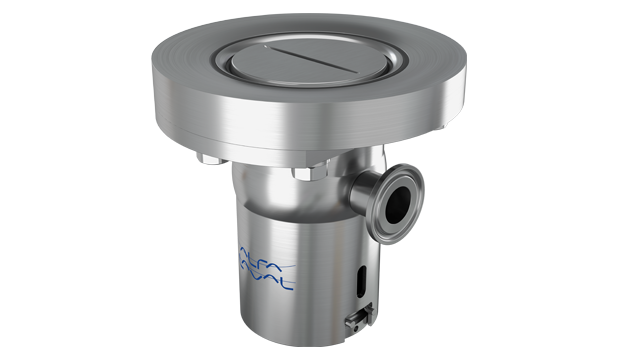Safeguard cheese production with 100% cleaning coverage of tank shadow areas
To increase cheese production by expanding its milk reception, a large Scandinavian dairy turned to the Beritech Group, an experienced tank and system builder. The ask? To guarantee complete cleaning coverage for two new 30-metre-high raw milk silos with bottom-mounted agitators. The answer? Beritech recommended Alfa Laval top-mounted tank cleaning devices for use together with Alfa Laval PlusClean® cleaning devices with wide centre slots for high-impact cleaning of tank shadow areas. When paired with a top-mounted cleaning device, PlusClean guarantees 100% tank cleaning coverage, up to 80% savings in water and cleaning media costs, and no product contamination.
DATE 2024-03-20A higher level of hygiene
To ensure food safety and no product contamination in the milk reception tanks, Beritech recommended Alfa Laval top-mounted cleaning devices and PlusClean cleaning devices. The PlusClean targets shadow areas underneath the agitator blades, where cleaning by direct jet impact from the top-mounted tank cleaning devices is not possible although indirect surface wetting takes place.
Eliminating contamination risks
In the past, the dairy had to compromise on its hygienic standards and sustainability goals to ensure sufficient cleaning coverage, using tank cleaning devices that were completely submerged in the product. This meant compromising on sustainability because these cleaning devices require operation at high flow rates. In addition, they are not fully drainable or self-cleaning, posing the risks of blockage and of creating new shadow areas. Moreover, maintenance of these devices requires tank entry by a service technician. In contrast, the PlusClean together with the top mounted cleaning device provides 100% cleaning coverage. Engineered to clean shadow areas that other tank cleaning devices miss, it ensures that no residue or microbes remain on surfaces underneath the agitator blades. Unlike maintenance for static spray balls and rotary spray heads, the PlusClean is integrated into the tank walls or bottom and has no moving parts inside the tank. All maintenance takes place outside the tank.
The Alfa Laval PlusClean® cleaning device is installed flush with the tank wall or bottom. It provides 100% cleaning coverage, up to 80% savings in water and cleaning media, and no product contamination.
Worry-free hygiene with cleaning validation
To validate hygienic process conditions after cleaning, the dairy conducted swab tests to validate tank cleaning. Test results confirmed that there were no contaminants or biofilm build-up on the backsides of agitator blades.
Faster, precision tank cleaning
Two minutes of every main CIP cycle is all it takes for the PlusClean’s dedicated, high-impact spray fan to remove all contaminants from the backsides of the agitator blades. While the blades rotate at 40% of the regular operating speed, the cleaning devices perform their duty, hitting the underneath of the blades with direct high-impact jet spray.
Complete cleaning coverage, measurable savings, and no product contamination. That’s true customer value. We always aim to optimize customer processes, increase productivity, and ensure food safety and quality.” Bent Larsen, CEO, Beritech Group, Alfa Laval Authorized Service Partner.
Up to 80% savings in water and cleaning media
Because the high-impact spray fan hits the shadow areas during a short period of time, very little water and cleaning media goes to waste. Compared to static spray ball and rotary spray head technologies, the Alfa Laval PlusClean cleaning device cuts water and cleaning media consumption by up to 80% thanks to optimized operating pressure and flow rates. These savings help the dairy achieve its sustainability goals.
Fast return on investment, low total cost of ownership
Low capital costs, low operating costs and low maintenance requirements ensure fast return on investment. After being activated more than 1,000 times, the PlusClean continues to safeguard process and product safety and boost productivity on the dairy’s cheese production lines.


